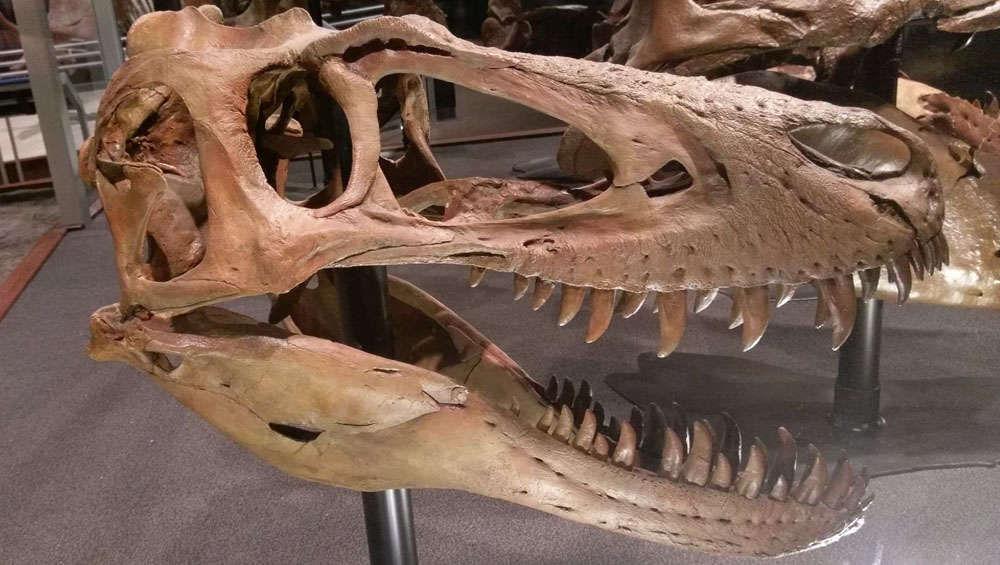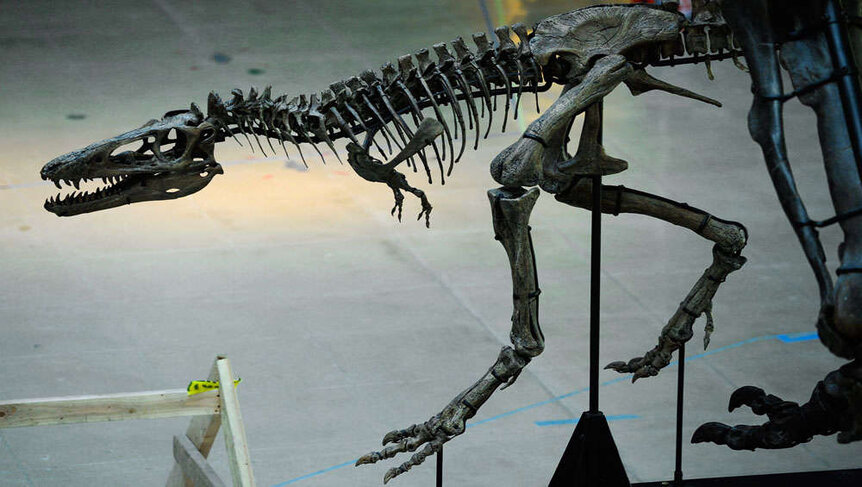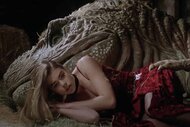Create a free profile to get unlimited access to exclusive videos, sweepstakes, and more!
Teen dinosaurs left no room for other dinosaurs, so they could be the cool kids that ate everything

Anyone who made it out of high school alive knows how vicious the cliques, gossip and bullies can be. Now imagine going through that as a carnivorous dinosaur.
Teenage theropods might not have had exclusive lunch tables or stolen someone else’s prom date, but there was a “you can’t sit with us” attitude when it came down to too many predators and not enough prey. There was a gap in the Cretaceous fossil record for a long time—where had all the medium carnivores gone? Turns out that there was no room for medium species when there were already too many juvenile dinosaurs of that size taking other juveniles out in a battle to out-compete rival species and get to the top of the food chain.
Things could get ugly when there were only so many resources to go around and hormonal dino teens (which were definitely not tiny, as you can see from the skull above) were swarming over the first thing that triggered their massive appetites.
“We found that the juveniles of large carnivorous dinosaurs were probably using the resources that would otherwise be available to medium sized species. The juveniles were likely consuming the prey, and taking up the environmental space of medium-sized theropods,” paleontologist Kat Schroeder, who led a study recently published in Nature, told SYFY WIRE.
Teen T-rex and juvenile versions of other theropods hadn’t yet grown into the bulk of their monstrous parents. Hatchlings could be no more than around 30 pounds because it would have been impossible to lay those eggs otherwise. It is thought that they started by snapping up insects, and as they grew, they took on larger and faster prey that they had to be quick on their feet to catch. While teens were vicious, they still hadn’t developed the bone-crushing jaws of the adults, which could ambush a slow-moving ceratopsian or hadrosaur taking a leisurely drink and sink their teeth into its neck without a problem.
Because Cretaceous megatheropods went through different phases as they grew, juveniles of different ages took on the roles that would have otherwise gone to smaller theropods. This didn’t really happen during the Jurassic period. Allosaurus, one of the most terrifying threats of the Jurassic, didn’t really change that much during its teen years. It basically hatched as a mini-adult that grew into a much larger one. Jurassic megatheropods like it also grew at a more steady pace and didn’t experience the more drastic transformations that something like T. Rex would in the Cretaceous. It probably depended on what prey was around.
“It is possible that Jurassic megatheropods didn’t need to change as much as they grew, considering the availability of enormous sauropod dinosaurs as potential prey—more food available means less competition,” Schroeder said. “Jurassic megatheropods may have been more likely to hunt in groups, or at least tolerate the presence of smaller members of their species at large carcasses.”
If there were not as many giant sauropods around, and Cretaceous sauropods were just big enough for an adult T. Rex to make a meal out of one, it wouldn’t have wanted to share. This would have forced the younger ones to go after things that corresponded to the size of whatever growth phase they were going through. Meaning, there was no more space in the ecological niche that would have normally been taken up by medium predators. This explains at least part of why dinosaur diversity was so low during the Cretaceous period.
It is also possible that medium theropods are missing because of juveniles or smaller dinos of a different species (or both) that ended up not fossilizing too well. This still remains a mystery. Paleontologists can only understand what really happened by digging deeper (both literally and otherwise). Finding out how dinosaurs changed as they grew, interacted with each other and other animals, and evolved over longer stretches of time could reveal the biological factors that caused certain phenomena. Schroeder believes that seeing how dinosaurs fit into their own communities and their overall ecosystems—and if there were any mean girls in the way—could give us an idea of how those tyrannical teens tried to survive.
“The energy available on the planet, and how it was partitioned, may explain more about dinosaur diversity,” she said. “Our research indicates that gigantism in dinosaurs had tangible effects on their mass distribution and community structure, and we’re excited to see what new research grows out of this idea.”















